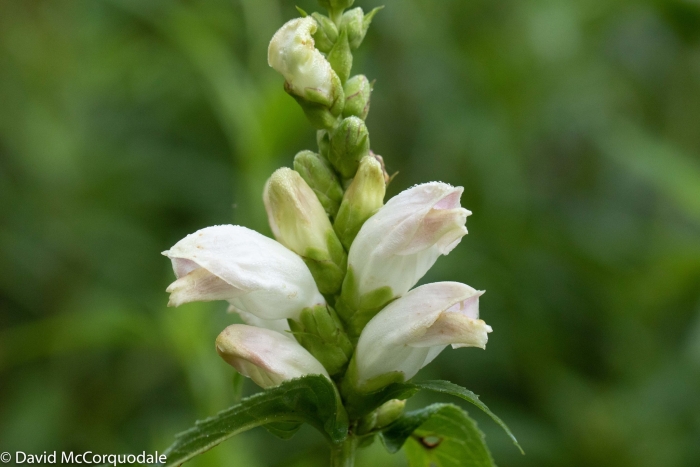White Turtlehead
(Chelone glabra)
White Turtlehead (Chelone glabra)
/
/

David McCorquodale
CC BY 4.0
Image By:
David McCorquodale
Recorded By:
Copyright:
CC BY 4.0
Copyright Notice:
Photo by: David McCorquodale | License Type: CC BY 4.0 | License URL: http://creativecommons.org/licenses/by/4.0/ | Rights Holder: David McCorquodale | Publisher: iNaturalist | Date Created: 2019-08-20T07:50:28-07:00 |










































































Estimated Native Range
Summary
Chelone glabra, commonly known as white turtlehead, is a perennial herb native to wet meadows, stream banks, and moist woodlands in North America, with a range extending from Georgia to Newfoundland and Labrador and from Mississippi to Manitoba. It typically grows to a height and width of 2-3 feet (0.6-0.9 meters). The plant is characterized by its upright stems and deep green, lance-shaped leaves. The distinctive white flowers, which resemble a turtle’s head, bloom in late summer to early fall and are quite showy, attracting pollinators such as bees and butterflies.
White turtlehead is valued for its unique flower shape and ability to thrive in wet conditions, making it an excellent choice for rain gardens, waterside plantings, and naturalized areas. It is also used in border plantings for its attractive foliage and flowers. Chelone glabra prefers consistently moist to wet soils and part shade, though it can tolerate full sun in cooler climates if kept moist. It is generally low-maintenance but may require staking in very rich soils to prevent flopping. While it is not typically afflicted by serious pests or diseases, powdery mildew can sometimes be a problem in humid conditions.CC BY-SA 4.0
White turtlehead is valued for its unique flower shape and ability to thrive in wet conditions, making it an excellent choice for rain gardens, waterside plantings, and naturalized areas. It is also used in border plantings for its attractive foliage and flowers. Chelone glabra prefers consistently moist to wet soils and part shade, though it can tolerate full sun in cooler climates if kept moist. It is generally low-maintenance but may require staking in very rich soils to prevent flopping. While it is not typically afflicted by serious pests or diseases, powdery mildew can sometimes be a problem in humid conditions.CC BY-SA 4.0
Plant Description
- Plant Type: Herb
- Height: 2-3 feet
- Width: 1.5-2.5 feet
- Growth Rate: Moderate
- Flower Color: White
- Flowering Season: Summer, Fall
- Leaf Retention: Deciduous
Growth Requirements
- Sun: Part Shade
- Water: Medium, High
- Drainage: Slow, Medium, Fast
Common Uses
Bee Garden, Bird Garden, Butterfly Garden, Deer Resistant, Erosion Control, Hummingbird Garden, Low Maintenance, Showy Flowers, Street Planting, Water Garden
Natural Habitat
Wet meadows, stream banks, and moist woodlands
Other Names
Common Names: Skjoldblomst, Snauskjoldblom, Vit Sköldpaddsört
Scientific Names: , Chelone glabra, Chelone alba, Chelone glabra var. glabra, Chelone glabra var. elatior, Chelone glabra var. linifolia, Chelone glabra var. dilatata, Chelone montana, Chelone glabra f. glabra, Chelone glabra f. tomentosa
GBIF Accepted Name: Chelone glabra L.